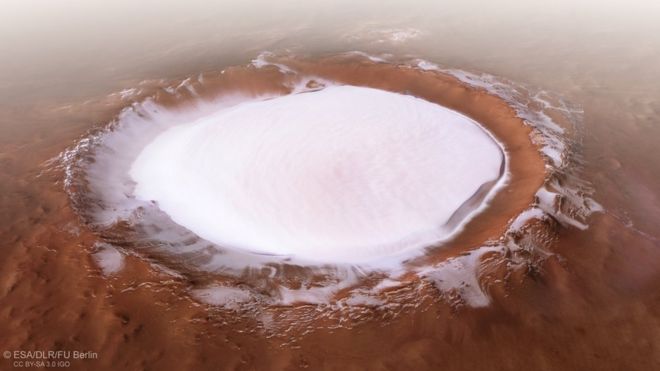
Winter Wonderland at the Korolev Crater at Mars North Pole
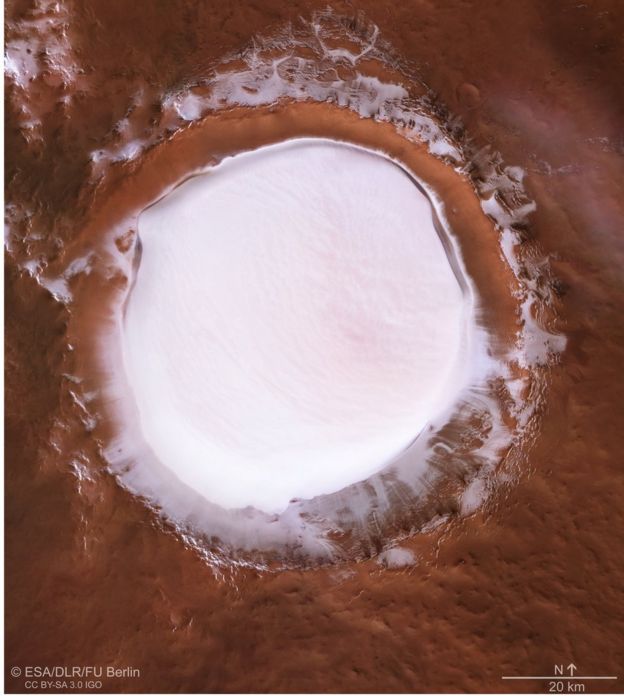
We have our own North Pole where Santa keeps his workshop. But as these pictures reveal, it's not the only planet with snow scenes this holiday season.
This is the Korolev crater, near the north pole of Mars, as captured by the European Space Agency (ESA)'s Mars Express mission.
The crater is 82km (50 miles) across, and filled with ice 1.8km thick. It was named after rocket engineer and spacecraft designer Sergei Korolev, the architect of the Soviet Union's space program.
The pictures of the crater are shots taken by the Mars Express High Resolution Stereo Camera. The Mars Express mission is the ESA's first venture to another planet. It was launched on June second, 2003, and entered Mars's orbit on Christmas Day that year. What would Santa look like on Mars? Slightly green, perhaps? Maybe like the Grinch but with facial hair and heavier.
While the Mars Express is filming the very cold Martian North Pole, the Parker Solar Probe, from NASA, is filming the hottest place we know of... our sun.
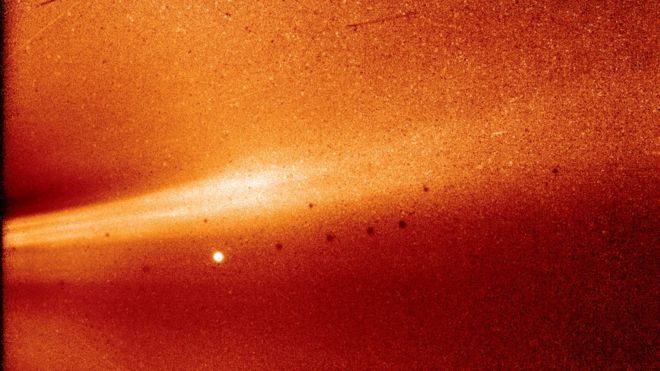
A streamer, a dense part of the corona, moves away from the Sun (out of view to the left)
Just weeks after making the closest ever flyby of the Sun, Parker Solar Probe is sending back its data.
Included in the observations is this remarkable image of the energetic gas, or plasma, flowing out from the star. The bright dot is actually Mercury. The black dots are repeats of the little world that occur simply because of the way the picture is constructed. Parker's WISPR instrument acquired the vista just 27.2 million km from the surface of the Sun on 8 November. The imager was looking out sideways from behind the probe's thick heat shield. 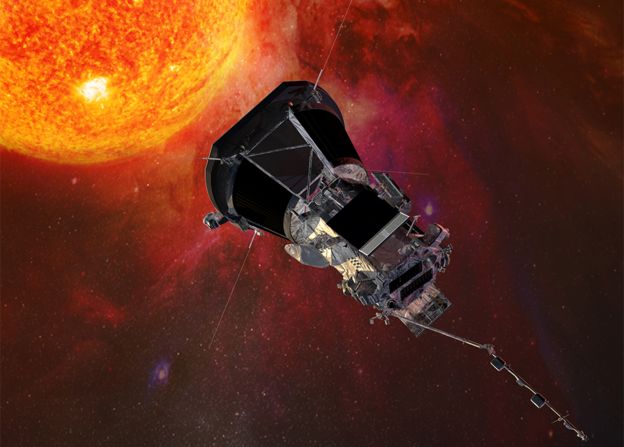
Parker must always keep its heatshield pointed at the Sun
This region is strangely hotter than the star's "surface", or photosphere. While this can be 6,000 degrees Celsius, the outer atmosphere may reach temperatures of a few million degrees.
The mechanisms that produce this super-heating are not fully understood. Parker aims to solve the puzzle by passing through the outer atmosphere and directly sampling its particle, magnetic and electric fields.
"We need to go into this region to be able to sample the new plasma, the newly formed material, to be able to see what processes, what physics, is taking place in there," explained Nicola Fox, director of the Heliophysics Division at Nasa.
"We want to understand why there is this temperature inversion, as in - you walk away from a hot star and the atmosphere gets hotter not colder as you would expect."
Not only is Parker breaking records for proximity to the Sun, it is also setting new speed records for a spacecraft. On the recent flyby, it achieved 375,000km/h. The fastest any previous probe managed was about 250,000km/h.
Parker will go quicker still on future close passes of the Sun. The latest science from the mission is being featured at the American Geophysical Union Fall Meeting - the largest annual gathering of Earth and space scientists.
Like most space junkies, I can't wait to see the pictures.
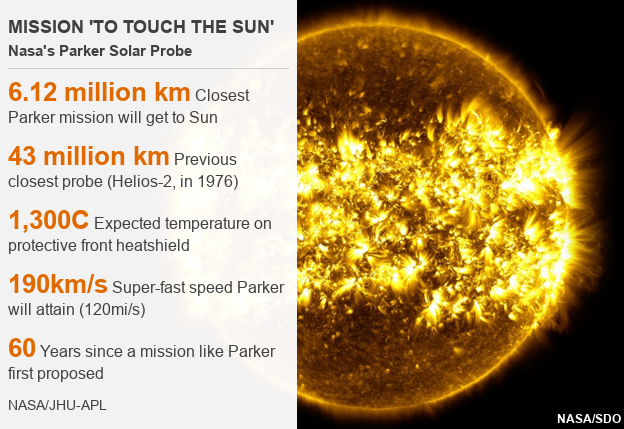
No comments:
Post a Comment
Through this ever open gate
None come too early
None too late
Thanks for dropping in ... the PICs